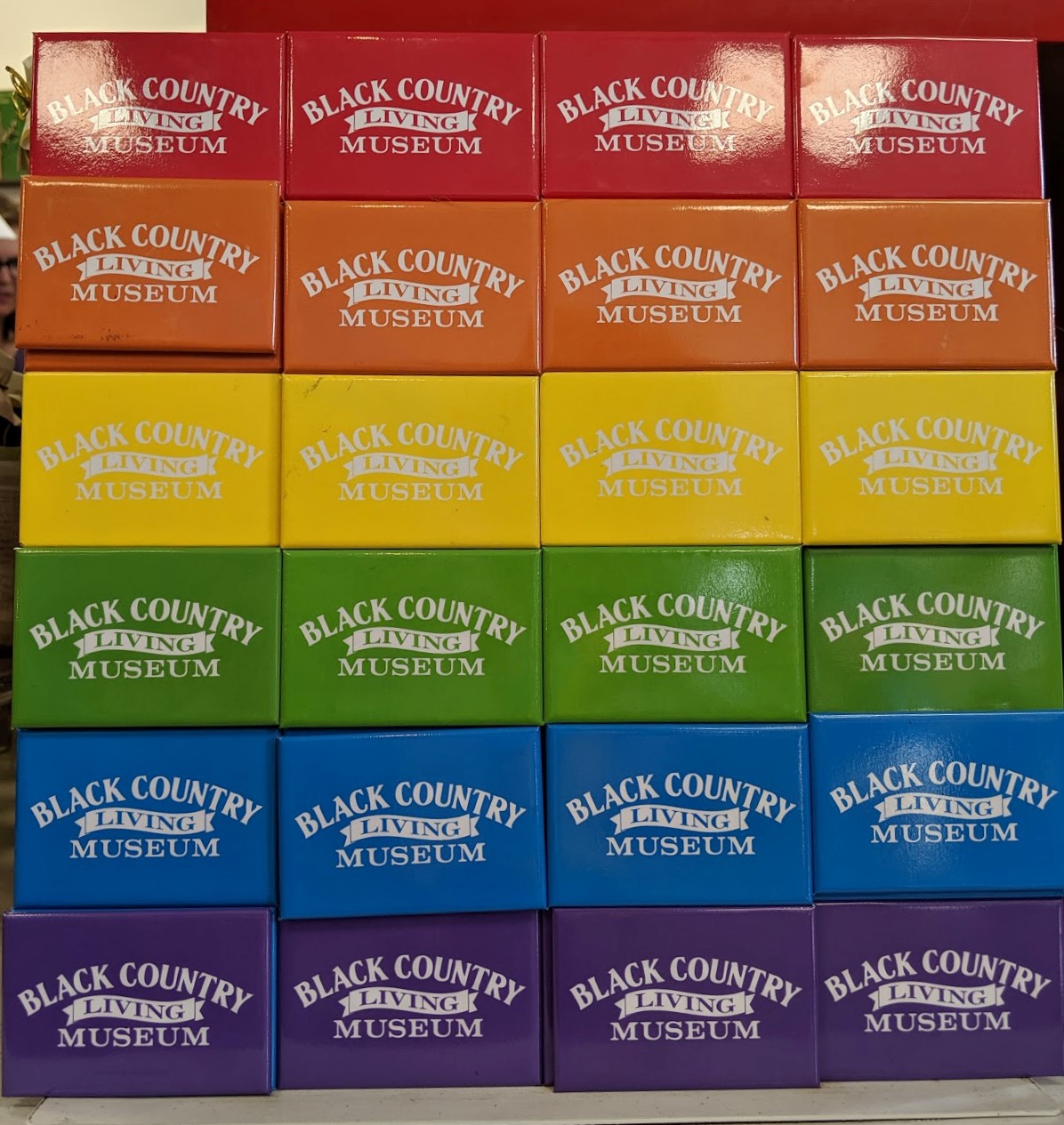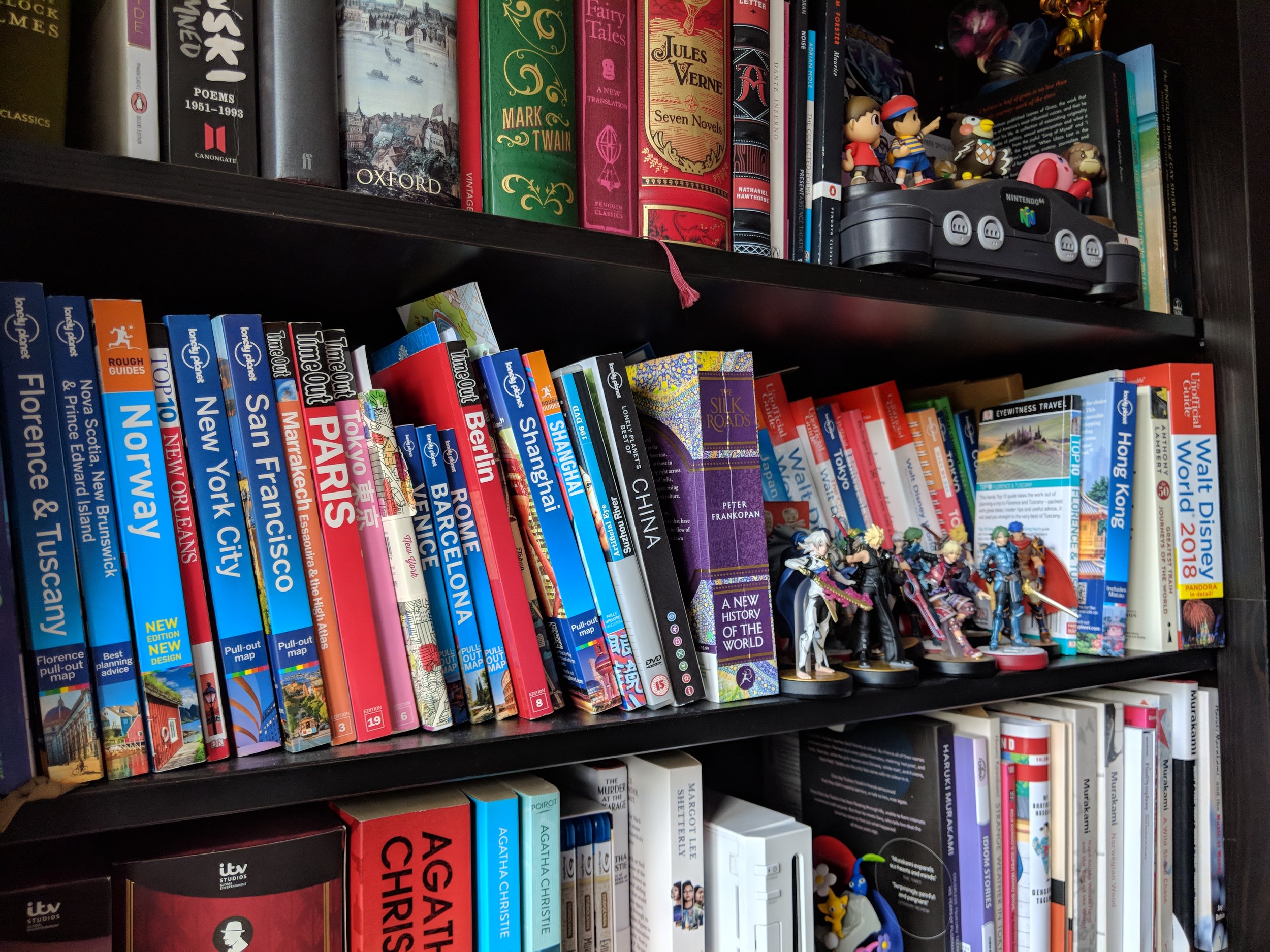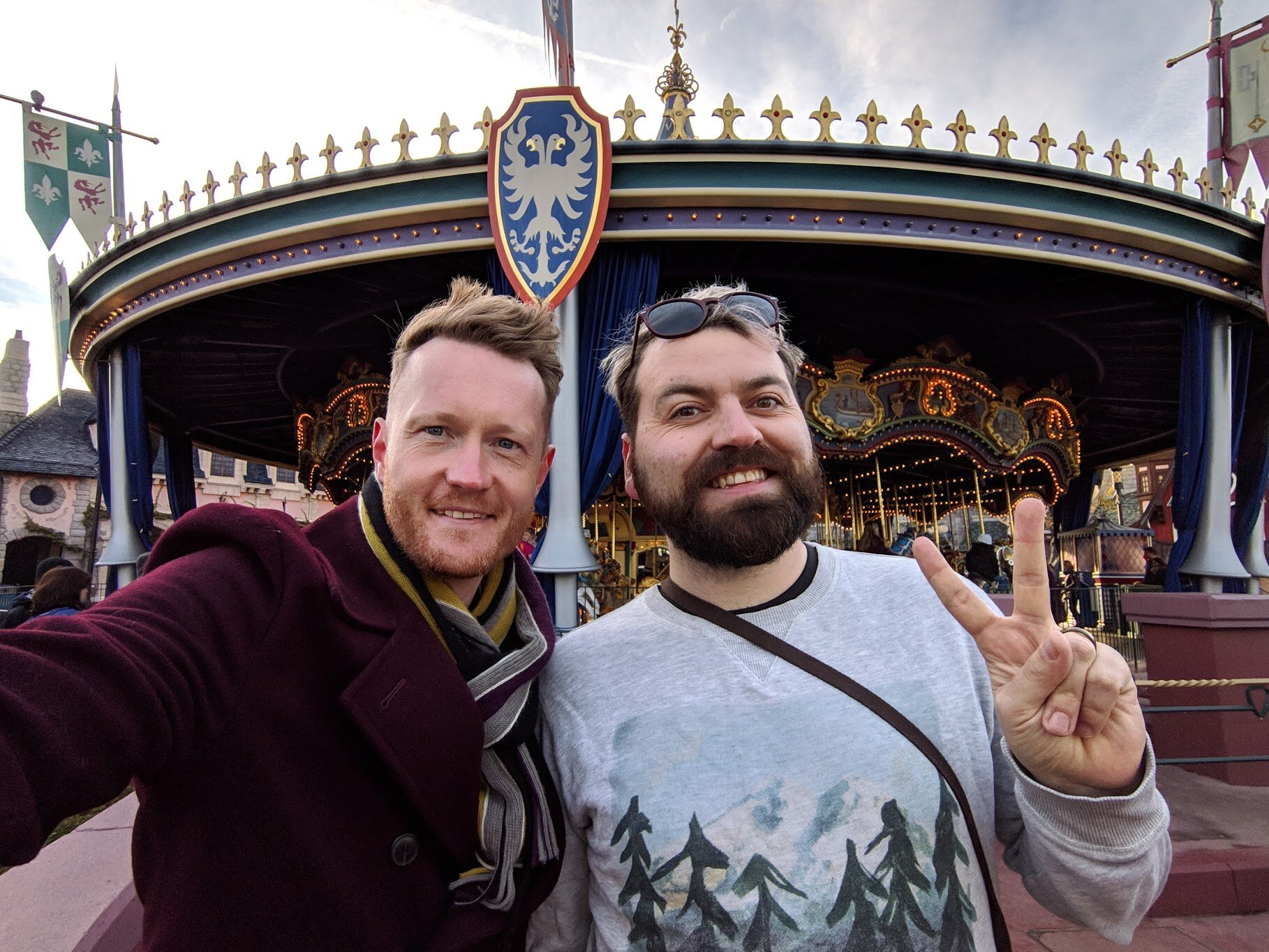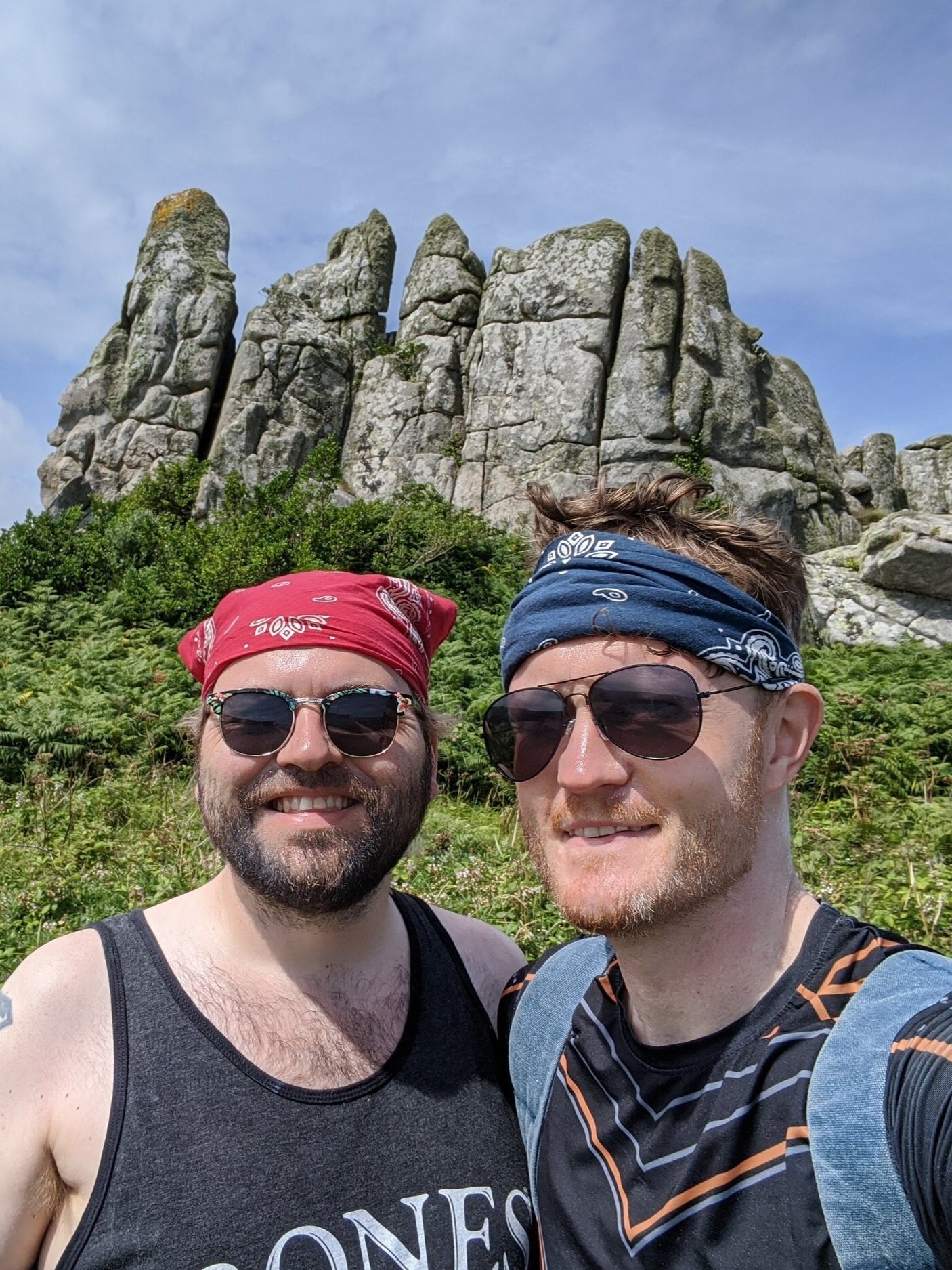Black Country Disneyland

“It’s just like walking down Main Street,” my husband says, not for the first time drawing this comparison. For the Disney uninitiated, Main Street, U.S.A. (to give it its full name) is the first themed ‘land’ you encounter just inside the main entrance of every Disneyland around the world (bar Shanghai). Except today, Antony and I aren’t anywhere near Disneyland. In fact, we’re only a ten minute drive (or a fifty minute walk) from where we live in the UK, at the Black Country Living Museum in Dudley, West Midlands.
The street we are walking down is essentially a row of shops. So far, so Main Street. There is a bakery, a general store, a hardware store and a chemist. But whereas Main Street’s shops are mostly frontages which do not reveal the true purpose until you’re inside (mostly selling Mickey Mouse merchandise), these are facsimiles of the real things. These are roughly (give or take 50 years or more either side) turn-of-the-20th-century recreations of original businesses, transported brick-by-brick and brought back to life in this ‘Living’ museum. Inside you will find staff (including many volunteers) who will tell you what life was like ‘back then’. Try asking a Disney ‘cast member’ about life in 1910 (the year Walt Disney settled on when he was aiming to recreate his childhood) and you’re likely to get a blank stare.
Superficially then, despite their contemporaneous ‘settings’, the two have nothing in common.
Except I have a nagging suspicion my husband is correct. It’s difficult to put my finger on why. It’s more of a feeling. We decide to explore this feeling in the surrounds of our favourite Black Country Museum hangout: the Bottle and Glass Inn.
Another building reconstructed brick-by-brick, the Bottle and Glass pub dates back to the 1820s and was one of the original buildings on the Museum site when it opened in 1978. “So, in Disney-speak it would be an opening day attraction,” my husband says, a twinkle in his eye.
Unwilling to concede he has hit the nail on the head just yet, I head to the bar to get the drinks. We’re waiting for some friends who we first met in this very room a couple of years ago at the Black Country Living Museum’s first ever gin-tasting experience. Since then, the Museum has gone on to host dozens of events covering a wide range of interests and special theme days, including 1940s weekends, as well as seasonal favourites like bonfire night, Halloween and Christmas. Not to mention the Peaky Blinders nights, which always sell out quickly.
Living out best Shelby life at the very first Peaky Blinders Night. The Museum run several each year and they always sell out quickly. Although dressing up is optional, most people do.
Being the ‘Official Home’ of the hit BBC show has doubtless had a positive impact on visitor numbers In 2013, the year Peaky Blinders began, visitor numbers were as low as 240,000 for the whole year. Five years (and four series of Peaky Blinders) later, 355,000 people were coming through the doors. 2018 was the Museum’s busiest ever year. Fans of the TV show are clearly eager to see the filming locations for themselves and walk in the footsteps of Cillian Murphy, Tom Hardy, Adrien Brody, Helen McCrory, Sophie Rundle and the rest of the cast. With the fifth season about to commence and a sixth already greenlit, it is likely visitor numbers will continue to grow. Certainly, bosses are hoping so, with a target of half a million visitors a year by 2025.
Fans of Peaky Blinders will recognise many locations from the show, including Anchor Forge shown here, where lots of unsavoury events have transpired across the series.
A £23m investment seems destined to secure the Museum’s future well beyond the final series of Peaky Blinders. Walt Disney famously declared that “Disneyland will never be completed”. He hated the idea of the Park frozen in amber and, when executives tried to do just that rested on their laurels, visitor numbers declined. To avoid this, the Black Country Living Museum’s ‘Forging Ahead’ project will add substantially to the Museum’s attractions, with building from the 1940s-1960s period, including a pub called the ‘Elephant and Castle’ which both Antony and I remember in its original location near the Wolverhampton ring road. Now I know how some fans of the Museum felt when a row of shops from the 1930s was introduced around a decade ago: either I’m getting old or history is catching up with me.
Back in the existing pub, the Bottle and Glass, there are already signs of development. Quite literally in the case of the chalkboard outside advertising the Museum’s first ever (to my recollection) cocktail: the St. Clements, a gin-and-orange-based concoction named for the famous nursery rhyme. The cocktail is, of course, a venerable invention, dating back as long as most of the buildings in the Museum. But by all accounts, the Bottle and Glass was not, in its original incarnation, the sort of place where mixed drinks were de rigeur. Purists may grumble into their pints, but a cocktail of any kind is welcome addition to what has previously been a somewhat limited choice of libations.
Not as limited as Disneyland of course. Famously, the original Disneyland park and most subsequent kingdoms of magic have been ‘dry’ parks. The initial lack of wine availability has been held up as one of the reasons for Disneyland Paris’s lack of success in its first iteration: Euro Disney. Lo and behold, when the vin started pouring the visitors started pouring in as well.
Of course, many Disney-branded parks have become famous watering holes. Orlando’s EPCOT even has a food and wine festival each Autumn. And the best bar on Disney property is, for my money, the 1950s themed Prime Time Café in Disney World’s Hollywood Studios. Although the 1950s is now comfortably within the remit of the Black Country Living Museum, this time period on our side of the pond was somewhat austere, with post-war rationing continuing until the middle of the decade. Having said that, the 1950s saw an ‘espresso revolution’, with coffee bars becoming commonplace in some parts of the UK. Maybe that is a nostalgia-tinged avenue the Black Country Living Museum are considering exploring in lieu of a UK equivalent to the Mad Men-lifestyle?
Of all the local delicacies on offer, the charcoal ice cream with pork scratchings is the most ‘out there’. Could we be getting more experimental flavours as the Museum develops?
Not long after I sit down with a couple of ‘St. Clements’, I steel myself for telling my spouse he was right (never a pleasant experience). Yes darling, this Museum does have a lot in common with Disneyland. Fortunately, our friends Hannah and Maz arrive to do the job for me. Hannah is a Disney-addict and drags her wife Maz around just as Antony has to do with me. Maz and I share the same amount of unwillingness to ‘do Disney’ on a regular basis: I.E., not that much. But we put a brave face on it. Our cynical protestations of ‘it’s cheesy, it’s mass produced, it’s all the same’ fall away within thirty seconds of passing through the turnstiles.
Conversation quickly turns to Disney and all four of us quickly fall back into a familiar groove of completely agreeing with each other.
Eventually, we drag ourselves away from the flavoured gins (the JJ Whitley nettle flavour is our clear favourite) and take in the sights. Being frequent visitors (all four of us are members), we know all of the buildings by heart. First we pass the cinema showing silent one or two reel comedies, just as the Main Street Cinema projects Disney shorts in California’s original Disneyland. It’s a part of Disneyland which is often neglected by those looking for more white knuckle pleasures, but Antony and I love it. It’s usually the antics of Chaplin on show at the Black Country Museum cinema, who of course was, along with Buster Keaton (my favourite silent comedy star), a big influence on early Disney cartoons.
Further on, a young volunteer in period dress is organising some street games with children in more up-to-date garb. They use a skipping rope, jumping in the air, flashing their incongruous Nike trainers. The volunteer laughs along with genuine delight. Some volunteers choose to stay in character throughout, like a Disney ‘cast member’ pretending to be THE Mickey or Minnie Mouse. Others just enjoy inhabiting an earlier time, if only for a few hours on a Saturday. Later, we will see this young volunteer ‘offstage’, catching the very modern bus back home from just outside the Museum, the illusion (delightfully) broken.
Looking back down the cobbled street to the Bottle and Glass, Antony, who is well-versed in theme park theory, observes how the pub acts as a focal point for everything else. In Disney-speak it would be a ‘Wienie’, which sounds to me like a slang term for something you don’t usually hear about in Disney discourse. Indeed, there are some Disney experts who claim the less-than-family-friendly associations were intended by Walt. Phallic origins or not, the ‘wienie’ of the original Disneyland (replicated in most of the other parks) is the castle. You can’t fail to see it. In the absence of any tall buildings (minus the various chimneys) I think he is right about the Bottle and Glass. Whoever planned the Museum back in the 1970s knew what they were doing.
A ‘wienie’ to rival the pub? Disney thought visitors to his park required a ‘visual magnet’. Were the designers of the Black Country Museum thinking along similar lines?
Others (Antony tells me) claim ‘wienie’ is just an obsolete term for ‘joyful’ or ‘gay’. Which reminds me: as with most historical attractions, there is a distinct lack of LGBTQ+ representation, or diversity of any kind for that matter. This is something the Black Country Museum is eager to redress, with a commitment to make sure the ‘Forging Ahead’ development reflects the ethnic diversification of the 1950s and 1960s, an integral part of the Black Country’s heritage. The roles of women have been highlighted on many occasions, not just at key historical points, such as the one hundred year anniversary of the right to vote in 1918, but by the volunteers who present compelling evidence that it was the women who often held families together. Period dramas would have us think otherwise, but Black Country women did many of the same jobs as men, including back-breaking working like making chains, particularly while the men were away at war. The writer of Peaky Blinders has made pains to paint a more accurate representation of women in the early 20th century.
Queer history: Could we be seeing a special screening of James Whale films anytime soon? The Dudley-born director of Frankenstein, Bride of Frankenstein and The Invisible Man was portrayed by Ian McKellen in the 1998 film Gods and Monsters.
Besides a few artfully-arranged fridge magnets in the gift shop (forming a six stripe rainbow flag), the only sign of queerness I register on this visit is the spotlighting of James Whale, the gay film director hailed from Dudley, literally down the road. Whale never worked with Disney, but he was responsible for many of the best Universal monster classics (Frankenstein, The Invisible Man), so maybe he will receive a credit in the new Florida development from this rival film studio. Whale himself is the subject of a film, being movingly portrayed onscreen by Ian McKellen in Bill Condon’s 1998 masterpiece Gods and Monsters. Although Whale made his career in Hollywood, his childhood in Dudley shaped him – for better or worse – and it would be fascinating for the Museum to further develop this connection with a celebrity right on their doorstep.
We walk on past the sweet shop (something else in common with Main Street) and get to the Chip Shop just as it’s closing. A visit to the Museum is not complete if you do not partake of this quintessential Black Country ’street food’ (back before eating out of a paper wrapper was cool).
“This may be torturing the analogy, I say, but this is just like eating one of those Turkey Legs you can get at Disneyland.”
Antony looks at me reprovingly, his fingers hovering over the next chip.
“This is way better than a Turkey Leg.”
Becoming a member of the Black Country Museum costs £34, or £54 for two adults living at the same address. This allows unlimited visits as well as discounts in the shops - including the Chip Shop!
















